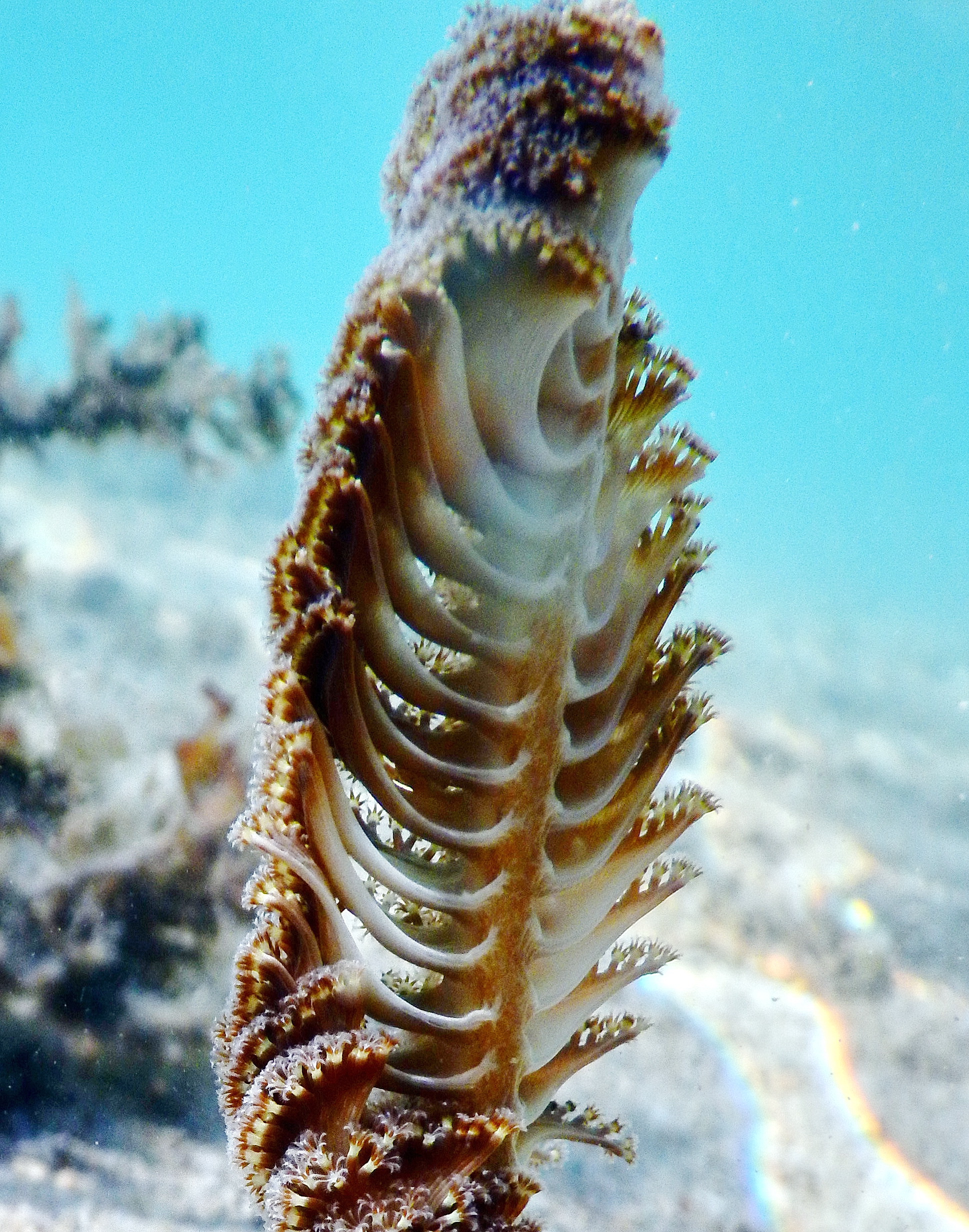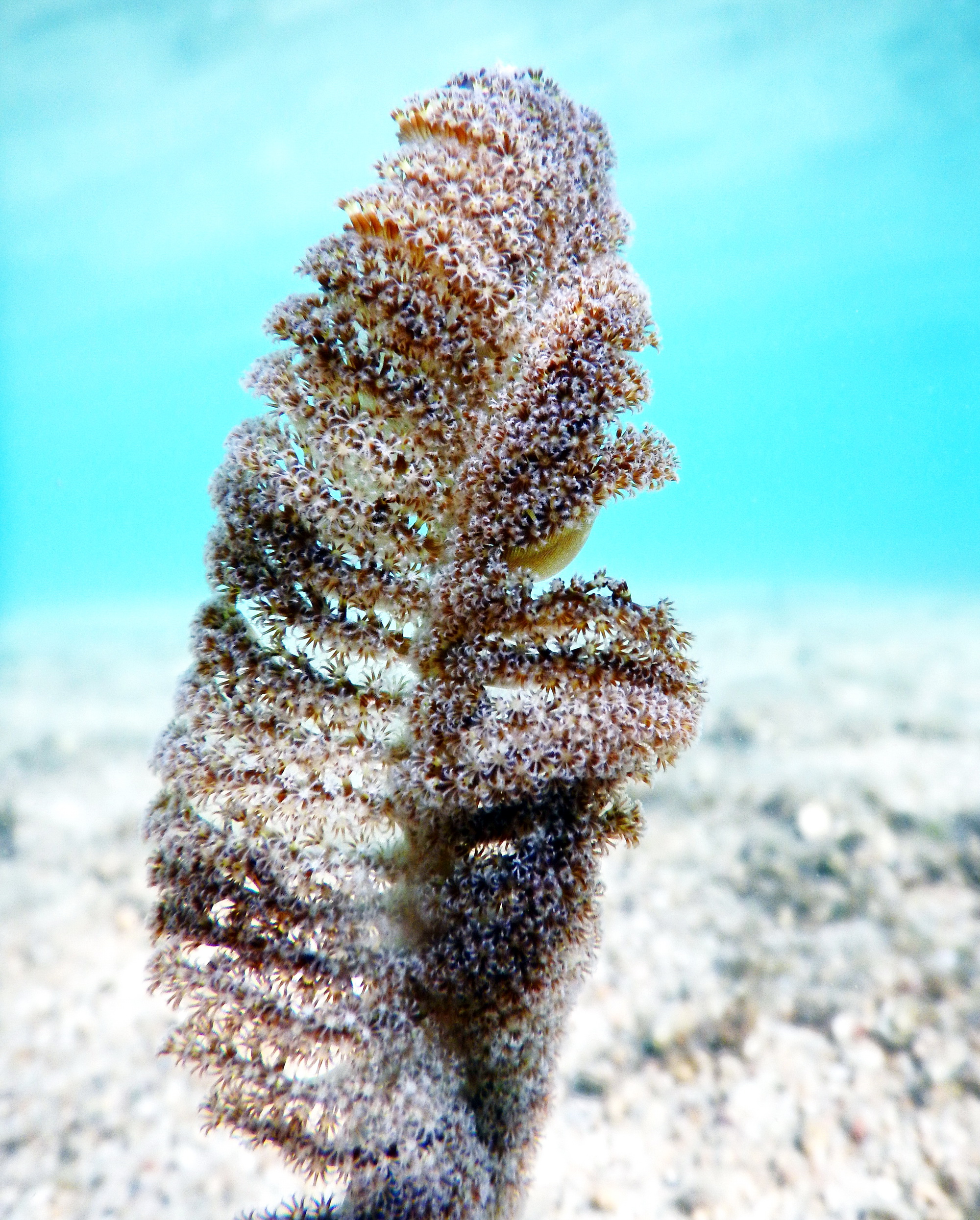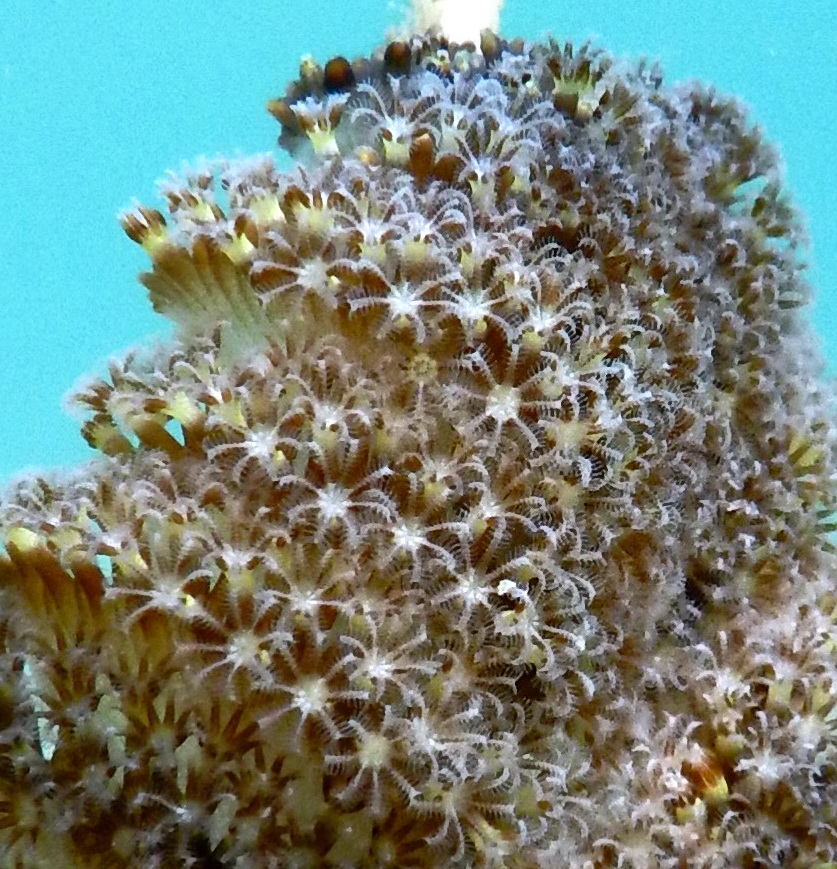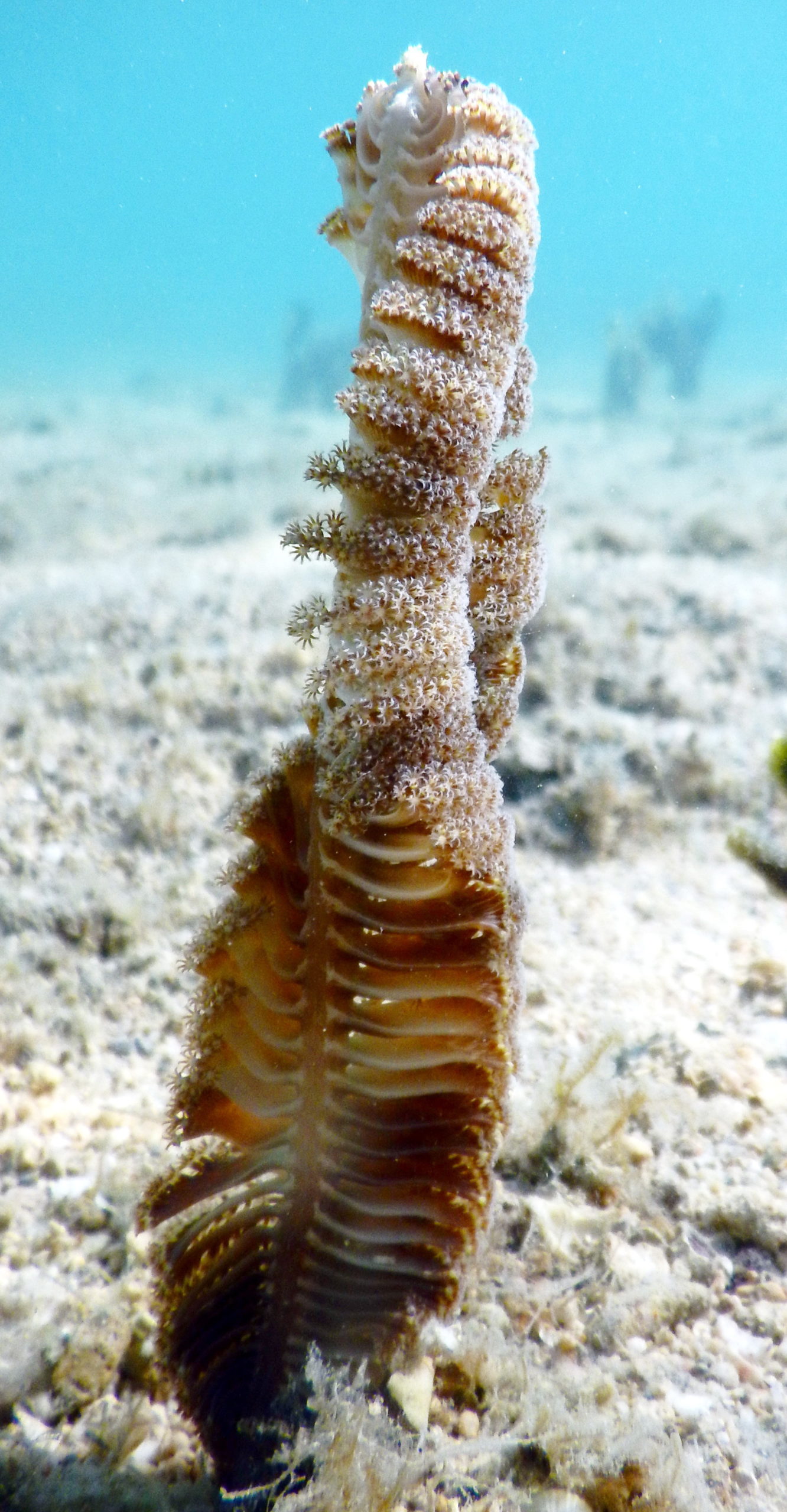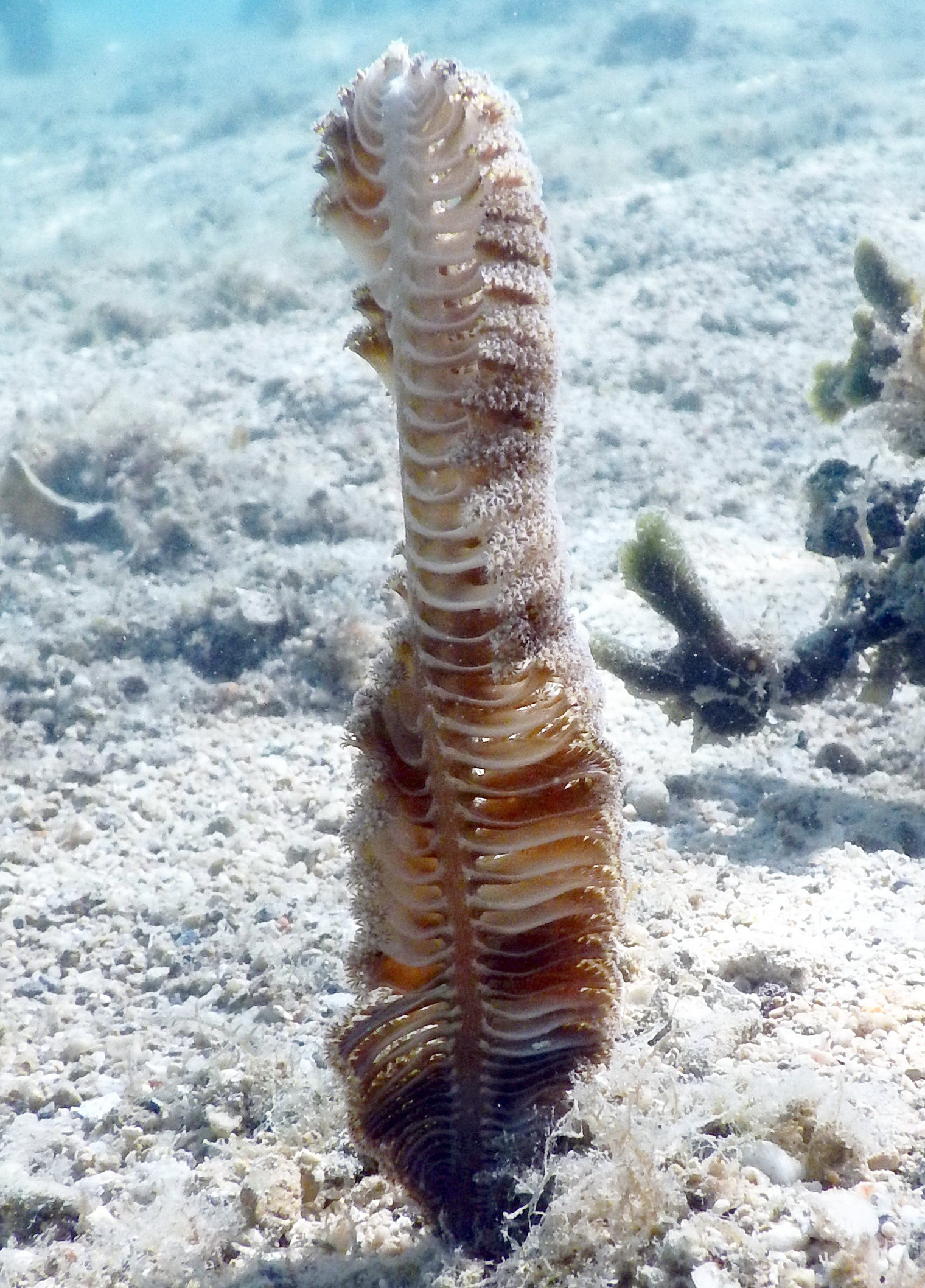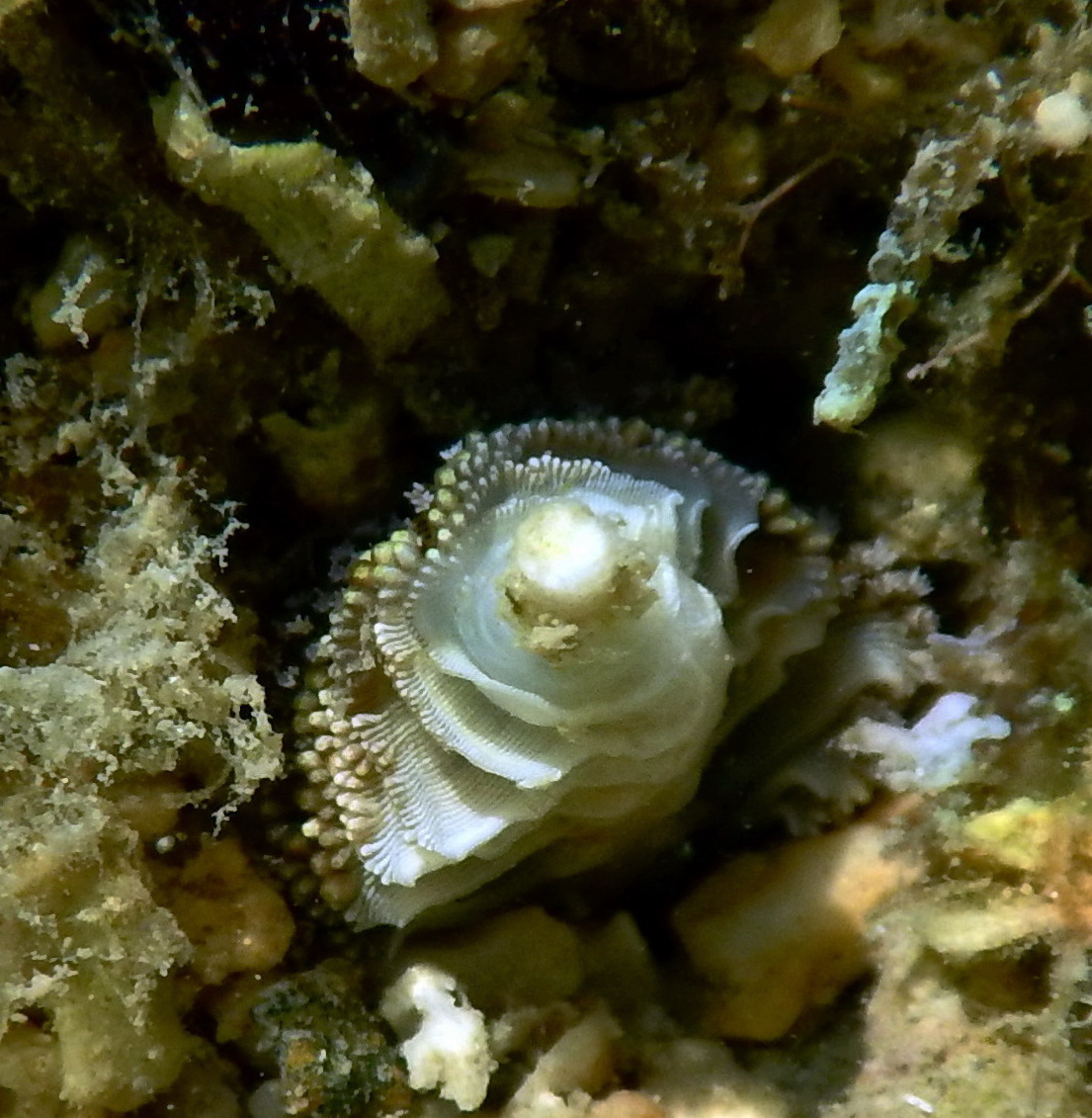Published in the Ocean Watch column, Honolulu Star-Advertiser © Susan Scott
August 13, 2015
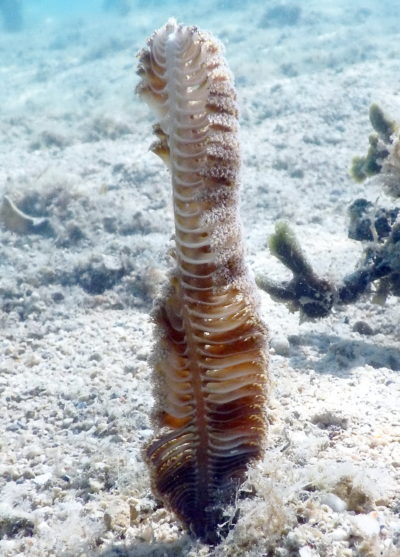
A sea pen is found in Australia’s Great Barrier Reef Marine Park. ©2016 Susan Scott
Craig and I don’t often snorkel side by side. He thinks that swimming fast in deep water is best, because that’s where the big jacks, sharks and manta rays hang out. I, however, like to float quietly in a few feet of water. Not only do some astonishing creatures live there, but I get to see them up close and take their pictures.
During a recent swim off a tiny island in Australia’s Great Barrier Reef Marine Park, Craig, as usual, headed out and I headed in. And sure enough, confirming my theory that shallow is good, there stood, like a lone sentry, the biggest, most beautiful sea pen I’ve ever seen.
I’ve not seen many — this discovery was No. 3. Sea pens belong to the soft coral clan and aren’t particularly rare, living from shallow water to deep. But the animals like to set up housekeeping in calm water and that usually means deep. Down around 150 feet, one researcher in Puget Sound found an average of 23 sea pens per square yard for miles on end.
Several sea pen species range from tropical to temperate waters around the world, growing 6 inches to 2 feet. One species in Scotland grows to 6 feet tall. Its witty name: the tall sea pen.Sea pens were so named because the upper parts of their bodies look like the fluffy feather quills people once used for writing. The animal’s bottoms, however, look like tulip bulbs buried in sand or mud.
From the bulbous base, a central stalk rises with delicate branches extending from each side like a feather. The branches bear hundreds to thousands of tiny mouths, each surrounded by eight tentacles (that’s the octo in octocorals, the scientific name for soft corals).
The sea pen orients itself into gentle currents with its branches stretched out. Unlucky plankton animals that drift through the branches get stung and eaten.
On the sides of the sea pen’s central stalk are holes lined with beating hairs, some drawing water in and others pushing it out through countless channels. Muscle contractions of the body also assist with this circulation system.
It would seem that these delicate feathery animals are rooted to their spots, but no. If disturbed, a sea pen can pull up its orbed anchor, inflate its body with water and drift like a balloon in the current to a new home.
Vast plains of fleshy, slow-moving animals are easy targets for carnivores. Nudibranchs (snails without shells) eat small sea pens. Starfish target adults.
I couldn’t resist lightly touching my 6-inch-tall pen, and that was that. A sea pen’s defense is to exhale its water and sink into the sand.
When Craig and I reunited, he told me he had seen a shark. Big deal. I had made an Australian pen pal.
